Life cycle of the monarch butterfly – introduction

As humans grow from babies to adults, we look very similar in shape and anatomy (body parts) throughout our lives. Our arms and legs get longer, we grow taller, our faces become more oval than round, and so on, but we are still recognisably human. This is similarly so for other mammals (animals that feed […]
Life cycle of the monarch – laying
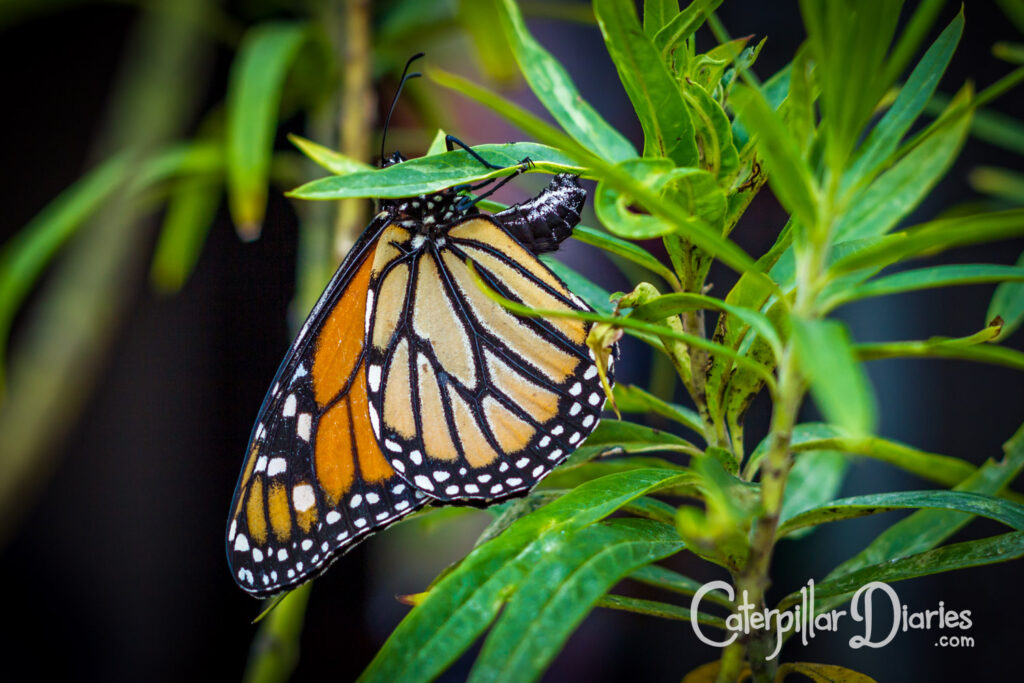
The female monarch butterfly lays her eggs on the leaves and stems of milkweed plants, such as the swan plant. The swan plant is the main type of milkweed that we have in New Zealand, and this is what monarch caterpillars eat. In America and other places around the world, the caterpillars eat other types […]
Life cycle of the monarch – the egg
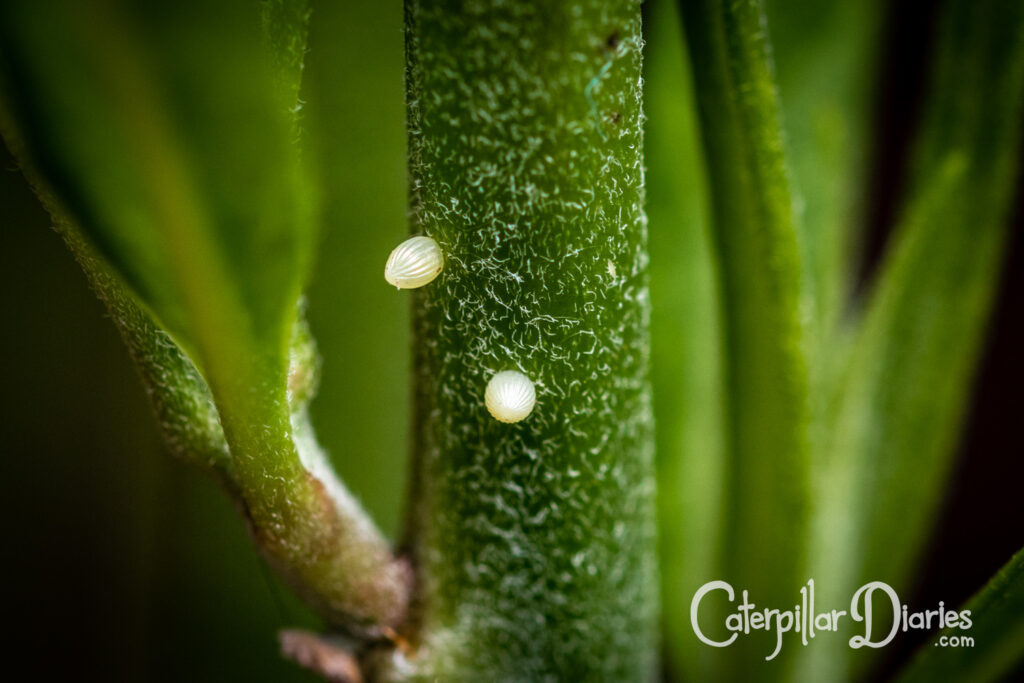
A monarch egg is creamy-white and tiny – about the size of the tip of a pencil. This makes the eggs hard to see on the plant, but you can find them if you look closely. A tiny caterpillar grows inside the egg until it takes up all the space in the shell. In New […]
Life cycle of the monarch – hatching from the egg
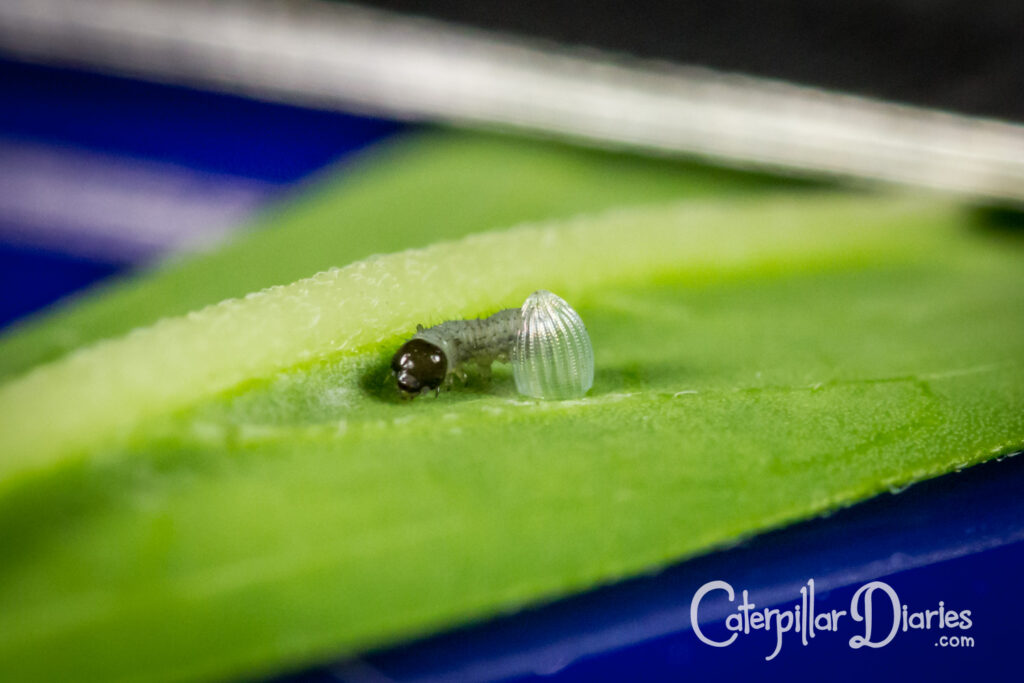
When it is ready to hatch, the tiny caterpillar starts to eats its way out of the egg. Once it has made a hole big enough, it crawls out onto the leaf. The newly hatched caterpillar will often first eat the rest of the egg shell, as it contains nutrients that will help it grow. […]
Life cycle of the monarch – the caterpillar
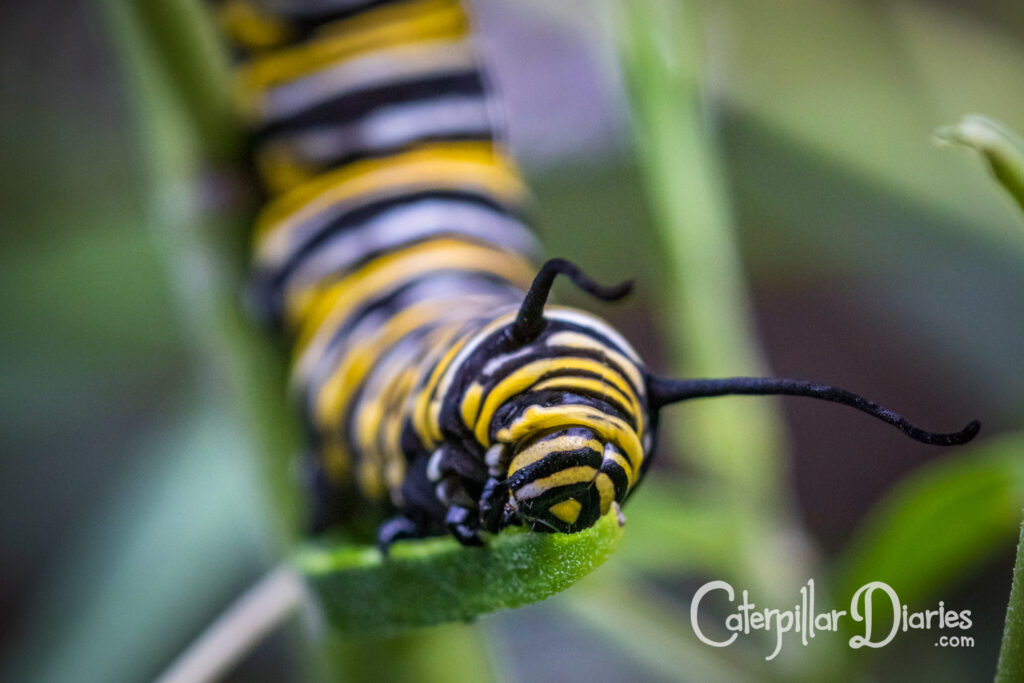
The newly hatched monarch caterpillar starts out tiny (2-3mm long), but, over the next nine to 20 days, it will grow to many times that size – up to about 45mm long. By weight, that is 7,000 times its size on hatching! To grow so much, it has to eat – and, as you’ll know […]
Life cycle of the monarch – pupating
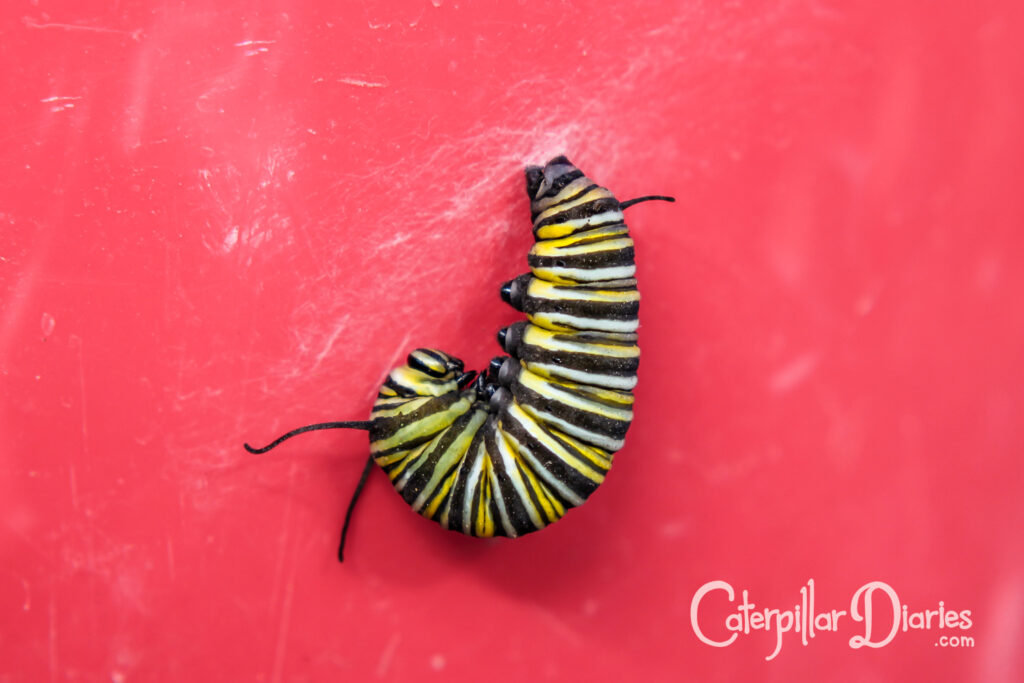
When the fifth-instar caterpillar has eaten enough (or the food has run out), it is time for the caterpillar to form its chrysalis (pupate). It finds a suitable spot that will allow it to hang, safe from predators. The caterpillar sits still for a while (up to a day). Then it spins a pad of […]
Life cycle of the monarch – the chrysalis

The chrysalis (or pupa) of a monarch butterfly is green – the same colour as a swan plant leaf – with a ridge of gold at its top and a series of gold dots at its base. The dots are not really made of gold, of course, but reflect the light in a similar way […]
Life cycle of the monarch – emerging from the chrysalis (eclosing)

About 24 hours after the chrysalis turned black, the butterfly begins to emerge (or eclose) from the chrysalis. The chrysalis splits open, and the butterfly’s head, feet, and wings emerge. The butterfly holds on tightly to the chrysalis, pulls out its abdomen, and hangs from the now-empty chrysalis casing. When it first emerges, the butterfly’s […]
Life cycle of the monarch – the butterfly
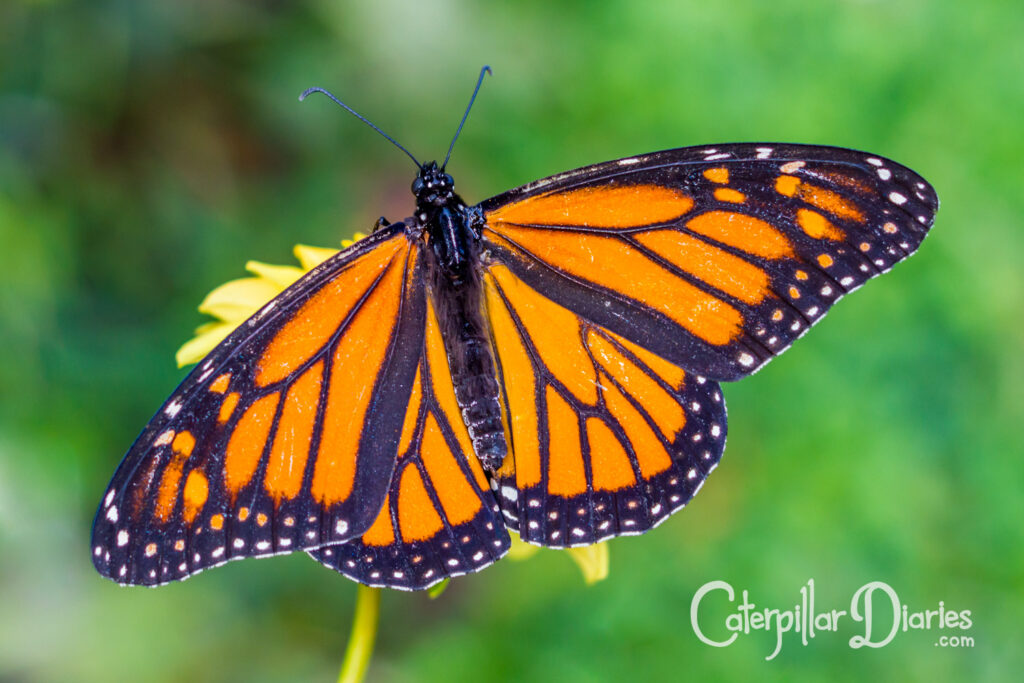
The butterfly is the adult in the monarch’s life cycle. A monarch butterfly has black and orange wings, with white dots along the edges. The female has thicker lines (or veins) on her wings, while the male has thinner lines (veins) and two black spots on his hindwings . While the caterpillars eat leaves, the […]
Life cycle of the monarch – mating
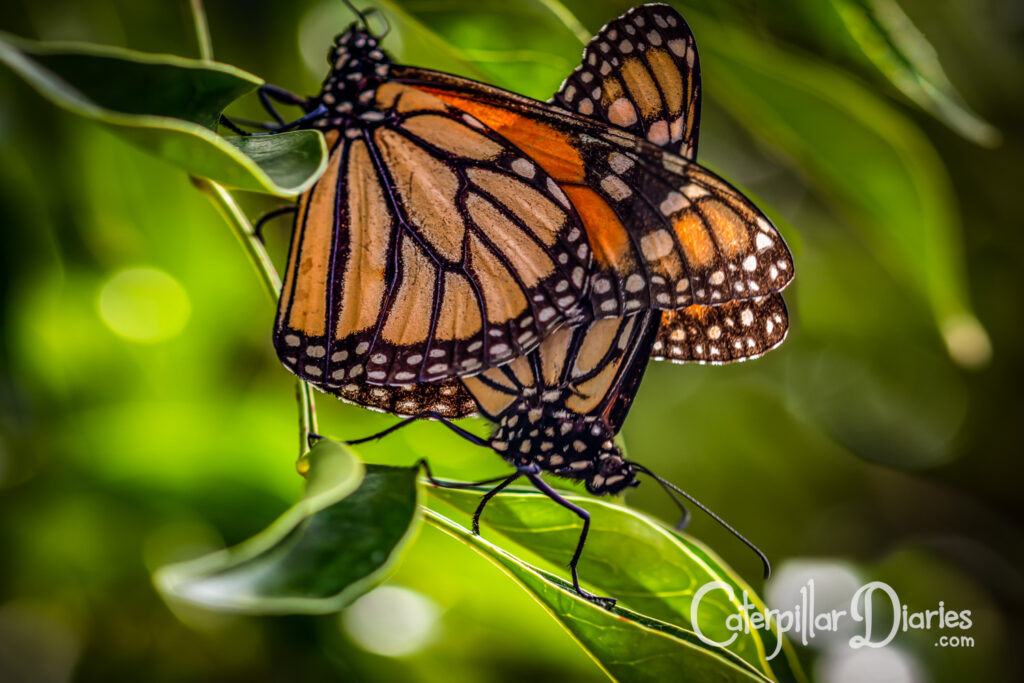
To continue the life cycle and produce more of their kind, monarch butterflies need to mate. The female produces the eggs inside her body, but she needs sperm from a male to fertilise them. When the butterflies have found a partner, the male will attach the end of his abdomen to the female’s to pass […]
